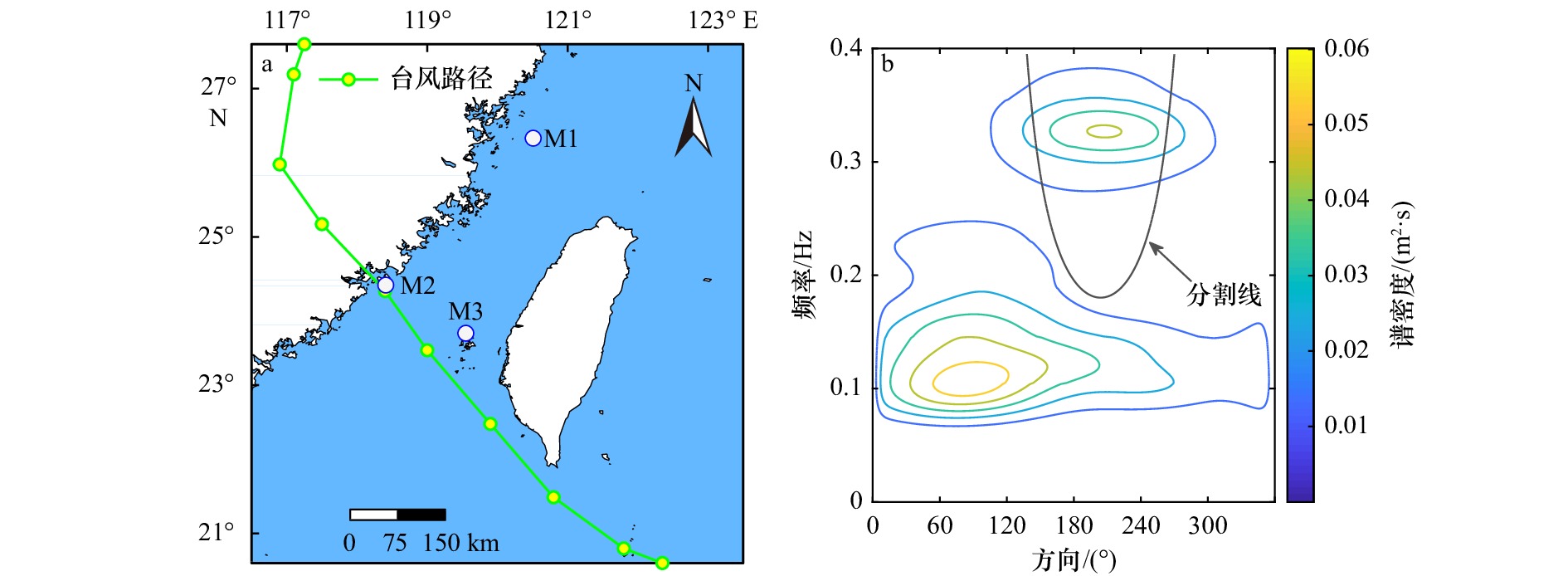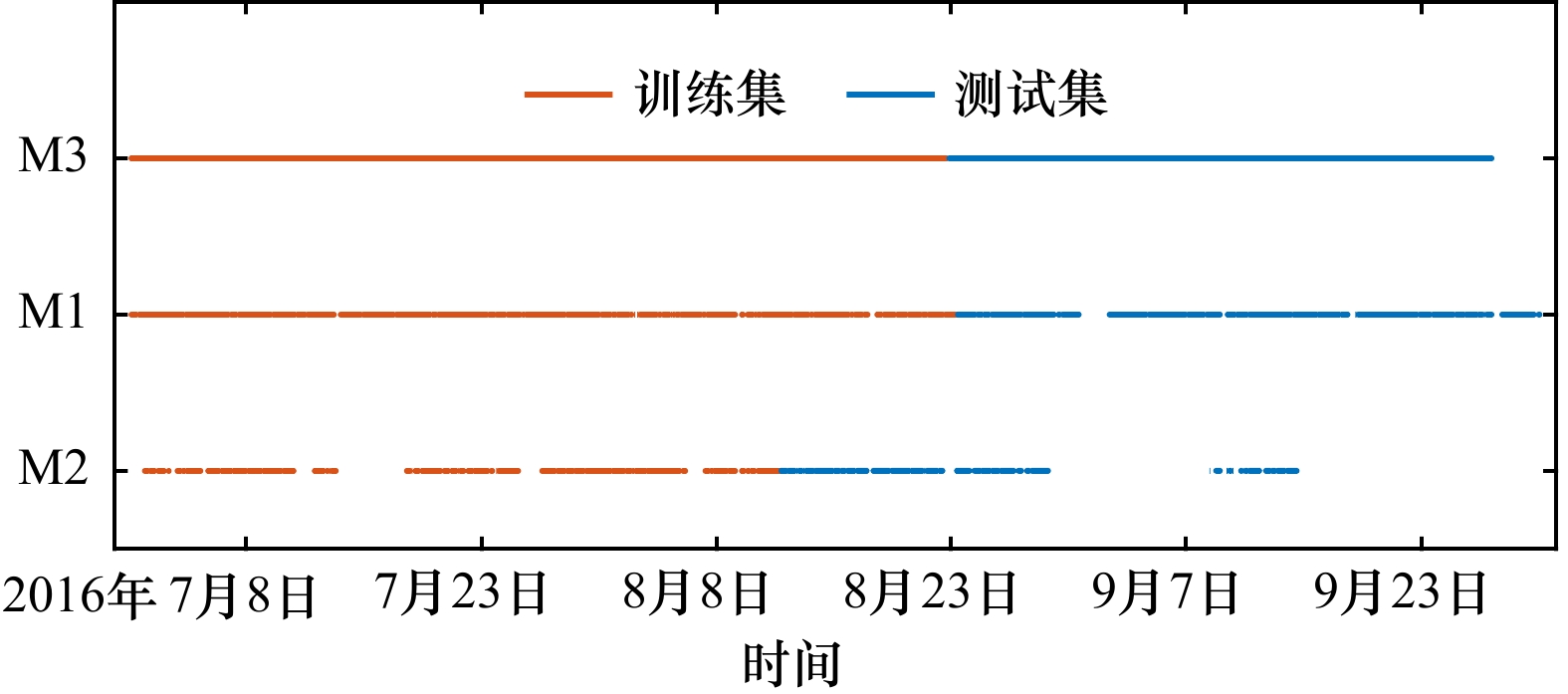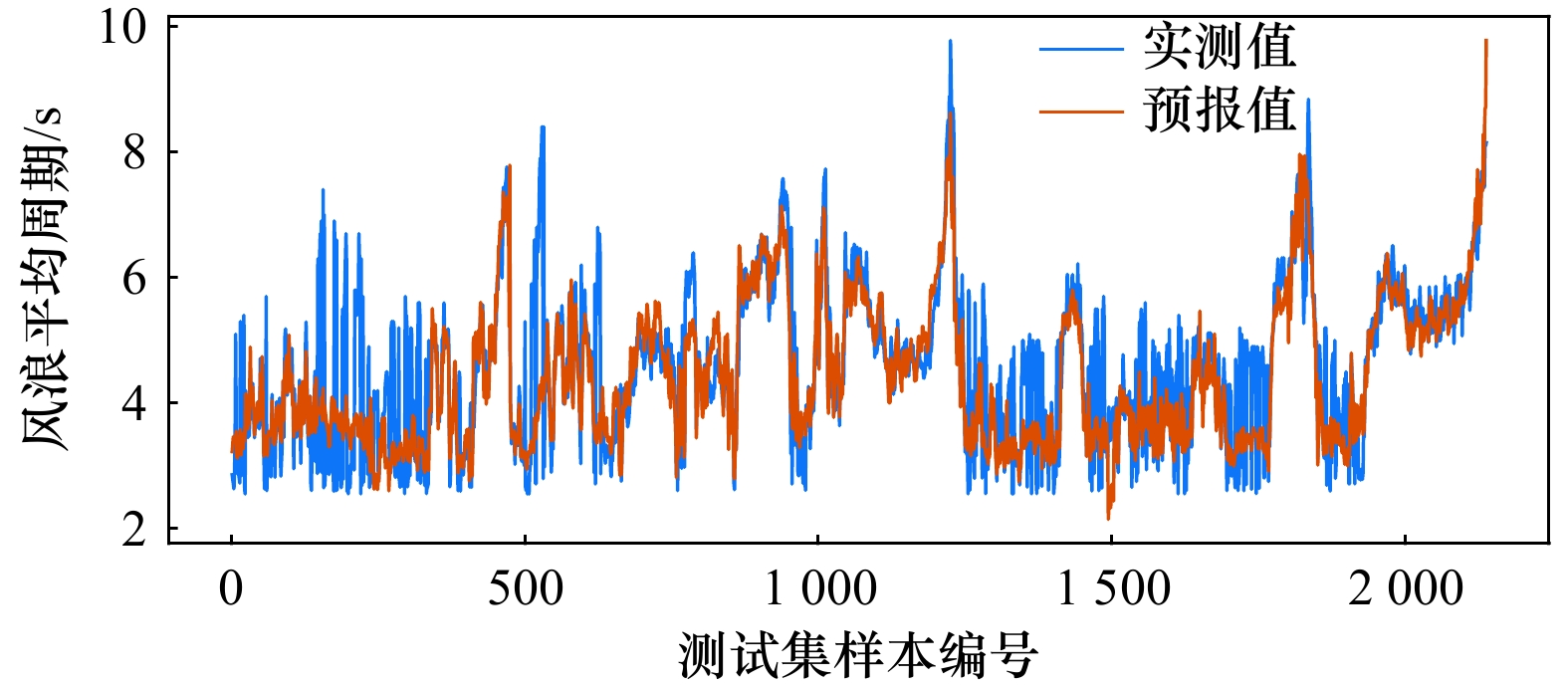Separation method of wind-wave and swell based on the multilayer perceptron
-
摘要: 风涌浪分离是研究风浪、涌浪各自特性的基础,但受限于海浪谱数据的匮乏,基于海浪谱的风涌浪分离方法难以普及应用,有效的解决办法是采用波浪观测中容易获取的基本波要素进行风涌浪分离。现有方法无法利用基本波要素全面计算出风浪、涌浪的比例及其特征参数,为此本文将机器学习引入到风涌浪分离中,以多层感知器模型为基础,提出了一种利用基本波要素、风要素准确计算出风涌浪参数的方法。该方法需要每个测站提供至少466笔、建议766笔及以上的实测波浪数据作为训练样本,适用于台湾海峡3个测站,在计算精度上显著优于基于海浪频谱的传统风涌浪分离方法,可为本海域缺乏海浪谱的测站提供替代性的风涌浪计算方案,有助于扩大实测风涌浪资料的来源,进而加强风涌浪分布特性以及预警预报研究。Abstract: Separation of wind-wave and swell is the basis for studying the respective characteristics of wind-wave and swell. However, due to the lack of wave spectrum data, it is difficult to popularize and apply separation methods based on wave spectrums. An effective solution is to use wave observations that are easy to obtain, namely basic wave elements to separate wind-wave and swell. Existing methods cannot use basic wave elements to comprehensively calculate the proportions and characteristic parameters of wind-wave and swell. For this reason, this paper introduces machine learning into the separation of wind-wave and swell. Based on the multi-layer perceptron model, a method using wave elements and wind elements to accurately estimate wind-wave and swell parameters is proposed. This method requires each station to provide at least 466 training samples of wave data and 766 or more training samples are recommended. The method is suitable for 3 stations in the Taiwan Strait with its accuracy significantly better than traditional methods based on wave spectrums. The proposed method can provide alternative calculation schemes of wind-wave and swell for stations lacking wave spectrums in this sea area. It helps expand the source of measured data of wind-wave and swell, therefore strengthening the research on the characteristics and early warning and forecasting of wind-wave and swell.
-
Key words:
- separation of wind-wave and swell /
- Taiwan Strait /
- machine learning /
- swell /
- wind-wave
-
表 1 测站数据信息表
Tab. 1 Statistics of station data information
站名 数据时间范围 方向谱数据量 风、浪要素数据量 重叠时段数据总量 水深/m M1 2016年7月1日至9月30日 2 030 2 208 2 030 58 M2 2016年7月1日至9月15日 1 185 1 826 1 185 25 M3 2016年7月1日至9月27日 2 130 2 130 2 130 27 表 2 多层感知器模型的输入输出设置
Tab. 2 Input and output settings of multilayer perceptron model
模型命名 输入因子 输出因子 模型1 风速,风向,混合浪波高,混合浪波向 风浪有效波高 模型2 风速,风向,混合浪波高,混合浪波向 涌浪有效波高 模型3 风速,风向,混合浪周期,混合浪波向 风浪平均周期 模型4 风速,风向,混合浪周期,混合浪波向 涌浪平均周期 表 3 四变量输出模型与单变量输出模型的平均相对误差(MRE)对比
Tab. 3 Comparision of mean relative error (MRE) between 4 output model and 1 output model
预报模式 风浪有效波高 涌浪有效波高 风浪平均周期 涌浪平均周期 四变量预报 12.7% 6.6% 13.1% 6.6% 单变量预报 10.1% 4.4% 10.3% 4.9% 表 4 不同风涌浪分离方法的误差指标
Tab. 4 Error indices of different separation methods of wind-wave and swell
目标变量 风涌浪分离方法 相关系数 平均绝对误差 平均相对误差 风浪有效波高 MLP法 0.97 0.08 m 10.1% PM法 0.98 0.28 m 50.9% WH法 0.83 0.28 m 20.3% 改进的WH法 0.86 0.54 m 56.7% JP法 0.77 0.30 m 50.2% 林伊楠等[11]的方法 0.96 0.34 m 45.6% 涌浪有效波高 MLP法 0.99 0.05 m 4.4% PM法 0.60 0.42 m 38.9% WH法 0.92 0.20 m 17.9% 改进的WH法 0.76 0.63 m 60.6% JP法 0.55 0.24 m 18.5% 林伊楠等[11]的方法 0.83 0.43 m 41.7% 风浪平均周期 MLP法 0.82 0.47 s 10.3% PM法 0.57 0.85 s 17.0% WH法 0.18 1.20 s 25.9% 改进的WH法 0.25 1.00 s 26.1% JP法 0.45 2.96 s 67.3% 林伊楠等[11]的方法 0.37 0.83 s 18.9% 涌浪平均周期 MLP法 0.92 0.35 s 4.9% PM法 0.43 2.28 s 34.6% WH法 0.80 0.77 s 11.8% 改进的WH法 0.73 3.37 s 52.5% JP法 0.37 1.53 s 22.4% 林伊楠等[11]的方法 0.28 2.52 s 40.4% -
[1] Tao Aifeng, Yan Jin, Pei Ye, et al. Swells of the East China Sea[J]. Journal of Ocean University of China, 2017, 16(4): 674−682. doi: 10.1007/s11802-017-3406-5 [2] 徐啸, 陶爱峰, 李雪丁, 等. 基于实测数据的台湾海峡中部波浪特征分析[J]. 热带海洋学报, 2021, 40(1): 12−20.Xu Xiao, Tao Aifeng, Li Xueding, et al. Analysis of wave characteristics in the central Taiwan Strait based on measured data[J]. Journal of Tropical Oceanography, 2021, 40(1): 12−20. [3] 汪炳祥, 常瑞芳, 王一飞. 风浪与涌浪的划分判据[J]. 黄渤海海洋, 1990, 8(1): 16−24.Wang Bingxiang, Chang Ruifang, Wang Yifei. Criteria of differentiating swell from wind waves[J]. Journal of Oceanography of Huanghai & Bohai Seas, 1990, 8(1): 16−24. [4] 郭佩芳, 施平, 王华, 等. 划分风浪与涌浪的一个新判据—海浪成份及其在南海的应用[J]. 青岛海洋大学学报, 1997, 27(2): 131−137.Guo Peifang, Shi Ping, Wang Hua, et al. A new criterion between wind wave and swell wave-by mixed wave composition factors and its application to the South China Sea[J]. Journal of Ocean University of Qingdao, 1997, 27(2): 131−137. [5] Yang Zheng, Song Lili, Mu Lin, et al. Separation of wind-sea and swell wave heights using altimeter data[C]//2021 IEEE International Geoscience and Remote Sensing Symposium IGARSS. Brussels, Belgium: IEEE, 2021: 7564−7567. [6] Earle M D. Development of algorithms for separation of sea and swell[R]. [S.l.]: National Data Buoy Center Tech, 1984: 53. [7] Wang D W, Hwang P A. An operational method for separating wind sea and swell from ocean wave spectra[J]. Journal of Atmospheric and Oceanic Technology, 2001, 18(12): 2052−2062. doi: 10.1175/1520-0426(2001)018<2052:AOMFSW>2.0.CO;2 [8] Hwang P A, Ocampo-Torres F J, García-Nava H. Wind sea and swell separation of 1D wave spectrum by a spectrum integration method[J]. Journal of Atmospheric and Oceanic Technology, 2012, 29(1): 116−128. doi: 10.1175/JTECH-D-11-00075.1 [9] Portilla J, Ocampo-Torres F J, Monbaliu J. Spectral partitioning and identification of wind sea and swell[J]. Journal of Atmospheric and Oceanic Technology, 2009, 26(1): 107−122. doi: 10.1175/2008JTECHO609.1 [10] 朱绍华, 于文太, 李广帅, 等. 基于双峰海浪谱的风浪和涌浪分离应用研究[J]. 中国造船, 2017, 58(4): 160−167. doi: 10.3969/j.issn.1000-4882.2017.04.019Zhu Shaohua, Yu Wentai, Li Guangshuai, et al. Separation of wind wave and swell based on double peak spectrum[J]. Shipbuilding of China, 2017, 58(4): 160−167. doi: 10.3969/j.issn.1000-4882.2017.04.019 [11] 林伊楠, 陶爱峰, 李雪丁, 等. 台湾海峡风涌浪分离方法研究[J]. 海洋学报, 2019, 41(11): 25−34.Lin Yi’nan, Tao Aifeng, Li Xueding, et al. Study on separation method of wind-wave and swell in the Taiwan Strait[J]. Haiyang Xuebao, 2019, 41(11): 25−34. [12] Hanson J L, Phillips O M. Automated analysis of ocean surface directional wave spectra[J]. Journal of Atmospheric and Oceanic Technology, 2001, 18(2): 277−293. doi: 10.1175/1520-0426(2001)018<0277:AAOOSD>2.0.CO;2 [13] 李水清, 赵栋梁. 风浪和涌浪分离方法的比较[J]. 海洋学报, 2012, 34(2): 23−29.Li Shuiqing, Zhao Dongliang. Comparisons on partitioning techniques to identify wind-wave and swell[J]. Haiyang Xuebao, 2012, 34(2): 23−29. [14] 国家市场监督管理总局, 国家标准化管理委员会. GB/T 14914.2-2019, 海洋观测规范 第2部分: 海滨观测[S]. 北京: 中国标准出版社, 2019.State Administration of Market Supervision and Administration, State Standardization Administration Commission. GB/T 14914.2-2019, The specification for marine observation-Part 2: offshore observation[S]. Beijing: Standards Press of China, 2019. [15] Meng Fan, Song Tao, Xu Danya, et al. Forecasting tropical cyclones wave height using bidirectional gated recurrent unit[J]. Ocean Engineering, 2021, 234: 108795. doi: 10.1016/j.oceaneng.2021.108795 [16] Nikoo M R, Kerachian R, Alizadeh M R. A fuzzy KNN-based model for significant wave height prediction in large lakes[J]. Oceanologia, 2018, 60(2): 153−168. doi: 10.1016/j.oceano.2017.09.003 [17] Komen G J, Hasselmann K, Hasselmann K. On the existence of a fully developed wind-sea spectrum[J]. Journal of Physical Oceanography, 1984, 14(8): 1271−1285. doi: 10.1175/1520-0485(1984)014<1271:OTEOAF>2.0.CO;2 [18] Tolman H L, Abdolali A, Accensi M, et al. User manual and system documentation of WAVEWATCH III (R) version 6.07[M]. USA: NOAA, 2019. [19] 张驰, 郭媛, 黎明. 人工神经网络模型发展及应用综述[J]. 计算机工程与应用, 2021, 57(11): 57−69. doi: 10.3778/j.issn.1002-8331.2102-0256Zhang Chi, Guo Yuan, Li Ming. Review of development and application of artificial neural network models[J]. Computer Engineering and Applications, 2021, 57(11): 57−69. doi: 10.3778/j.issn.1002-8331.2102-0256 [20] 周志华. 机器学习[M]. 北京: 清华大学出版社, 2016.Zhou Zhihua. Machine Learning[M]. Beijing: Tsinghua University Press, 2016. [21] Nair V, Hinton G E. Rectified linear units improve restricted Boltzmann machines[C]// Proceedings of the 27th International Conference on International Conference on Machine Learning. Haifa, Israel: Omnipress, 2010. [22] Berbić J, Ocvirk E, Carević D, et al. Application of neural networks and support vector machine for significant wave height prediction[J]. Oceanologia, 2017, 59(3): 331−349. doi: 10.1016/j.oceano.2017.03.007 [23] Fan Shuntao, Xiao Nianhao, Dong Sheng. A novel model to predict significant wave height based on long short-term memory network[J]. Ocean Engineering, 2020, 205: 107298. doi: 10.1016/j.oceaneng.2020.107298 [24] Kaloop M R, Kumar D, Zarzoura F, et al. A wavelet-particle swarm optimization-extreme learning machine hybrid modeling for significant wave height prediction[J]. Ocean Engineering, 2020, 213: 107777. doi: 10.1016/j.oceaneng.2020.107777 [25] 王燕, 钟建, 张志远. 支持向量回归的机器学习方法在海浪预测中的应用[J]. 海洋预报, 2020, 37(3): 29−34. doi: 10.11737/j.issn.1003-0239.2020.03.004Wang Yan, Zhong Jian, Zhang Zhiyuan. Application of support vector regression in significant wave height forecasting[J]. Marine forecasts, 2020, 37(3): 29−34. doi: 10.11737/j.issn.1003-0239.2020.03.004 [26] 李本霞, 吴淑萍, 邢闯, 等. 近海近岸高精度海浪业务化数值预报系统[J]. 海洋预报, 2010, 27(5): 1−6. doi: 10.3969/j.issn.1003-0239.2010.05.001Li Benxia, Wu Shuping, Xing Chuang, et al. High precision operational numerical prediction system for offshore and nearshore waves[J]. Marine Forecasts, 2010, 27(5): 1−6. doi: 10.3969/j.issn.1003-0239.2010.05.001 [27] Aertsen W, Kint V, Van Orshoven J, et al. Comparison and ranking of different modelling techniques for prediction of site index in mediterranean mountain forests[J]. Ecological Modelling, 2010, 221(8): 1119−1130. doi: 10.1016/j.ecolmodel.2010.01.007 -





 下载:
下载:









